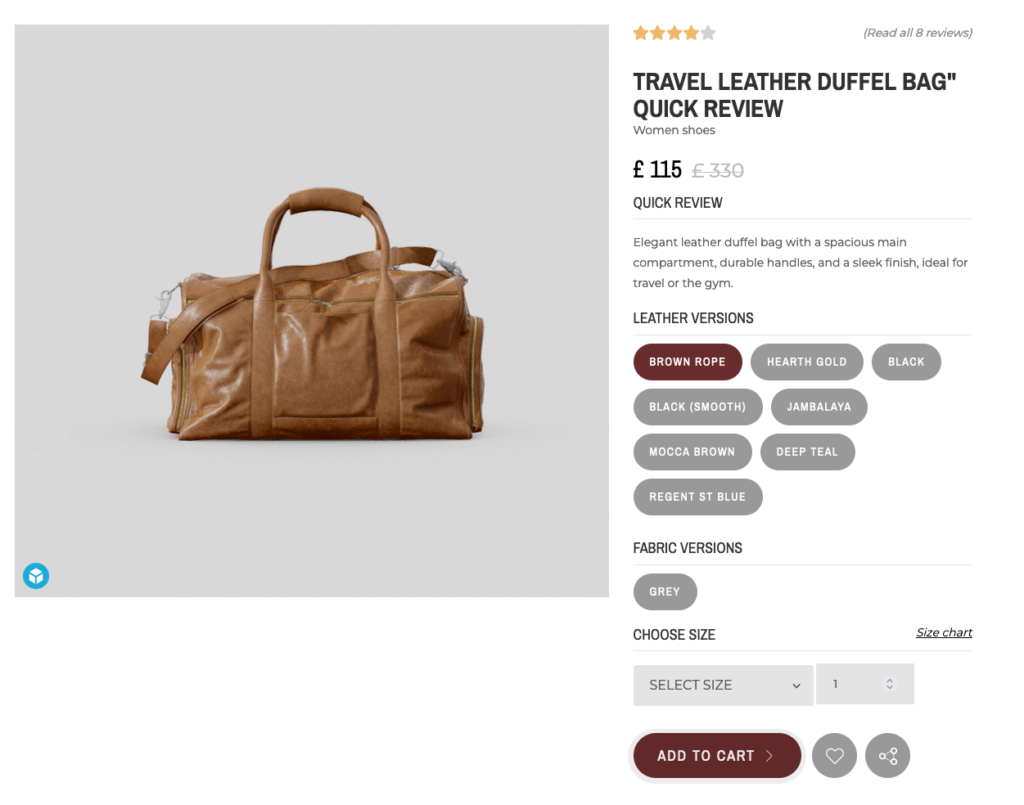In the rapidly evolving world of e-commerce and digital retail the ability to visually show products in a convincing way has revolutionized the game. This is particularly true for the furniture industry, where the look of the product, its feel, and the fit of a piece are vital factors when making a buying decision. The 3D Product Configurator is an innovative tool that has transformed the ways people buy furniture on the internet and in retail stores.
Rise of 3D Product Configurators
A 3D product configurator is an electronic tool that allows customers to view and interact with a product in three dimensions. A 3D product configurator permits users to rotate around, zoom in and personalize products in real time, as opposed to static images. This kind of technology is becoming more popular, especially in the furniture industry. It gives shoppers an exciting and engaging shopping experience.

Online furniture configuration tools enhance the customer experience
The better customer experience furniture configurators can provide is one of the biggest advantages. Customers can customize the color, finish and material of a piece of furniture and view the furniture from different perspectives. They can also visualize the way their new furniture will be able to fit into their home. This interactive experience not only makes shopping more enjoyable, but also helps customers make more educated buying decisions.
For example, Virtenzo’s 3-D furniture configurator allows users to alter their shopping experience with stunning 3D clarity and customization options. This level of interaction helps connect physical to online shopping and makes customers feel more confident in their options.
Inspiring more sales from E-commerce Interactive 3D Furniture Configurators
The effect of 3D product configurators on e-commerce sales is huge. Interactive 3D visualizations can boost conversion rates and reduce the number of returns. Customers are more likely purchase the product if they have a good understanding of it.
A 3D furniture configurator also allows retailers to showcase a vast range of product variations without the need to produce and photograph each one. It allows retailers to provide a wider range of products and meet the needs of different customer preferences.
Immersive 3D Configurators The Future of Furniture Shoppers
The future of shopping for furniture is certainly defined by 3D-configurators as technology continues to advance. These tools will get more sophisticated as they incorporate options like augmented realities (AR), virtual reality (VR) and various other tools to enhance the experience of shopping.
Customers could, for instance for instance, utilize AR on their phones to view a piece of art in their living room, or VR to explore a virtual showroom within an real-life environment. The shopping experience is improved by these technologies.
Implementing 3D Product Configurators: A Guide for Furniture Makers
Implementing the use of a 3D configurator to help furniture manufacturers as well as retailers can be challenging. The benefits are more than the difficulties. This is a step by instruction on how to begin:
Choose the Right Platform: Select a 3D configurator system that is compatible with your company’s goals and requirements. Features like customisation, integration and scalability are vital.
Digitize Your Products: Create high-quality 3D models of your furniture pieces. Professionals in hiring can ensure accuracy and details.
Integrate the Configurator to your website. Partner with your website’s development team to integrate the configurator into your store online. It should be responsive to mobile users to use on any device.
Enhance with AR/VR: Consider adding VR or AR capabilities to offer a more immersive experience.
Marketing your new tool: Market your new 3D Configurator through your channels of marketing. It is also possible to provide training to your customers about how to utilize it.
Conclusion
3D configurators for products are revolutionizing the furniture market, offering customers a unique experience, as well as increasing sales. By allowing customers to interact with and modify products in real-time, these tools can bridge the gap between in-store and online shopping which makes the purchase process more exciting and knowledgeable. As technology develops and the use of AR and VR will transform the landscape, making immersive shopping experiences the standard. Implementing this technology by furniture makers and retailers is not an option but rather is a requirement for them to stay competitive in a digital age.